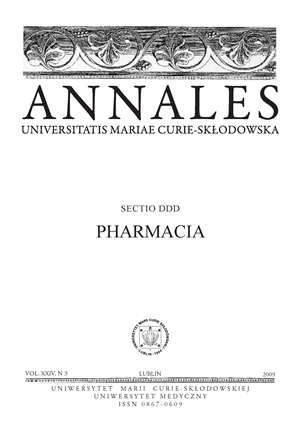Current knowledge of cervical cancer: pathogenesis,prevention, and treatment. Part I
Abstract
Cervical cancer is the second most common cancer after breast cancer among women. Worldwide, an estimated 466 000 women are diagnosed with cervical cancer each year, and around a quarter of a million die from the disease. Cervical cancer is a disease resulting from infection with high-risk typesof human papillomaviruses ( HPV). It is a sexually transmitted disease, often slow-growing with no symptoms until the later stages. Nowadays regular cervical screening is commonly used to prevent disease development (almost 100% effective for the prevention of types 16 and 18). HPV vaccination gives very good effect as well.
References
1. Bosch F. X., Lorincz A., Muñoz N. et al.: The causal relation between human papillomavirus and cervical cancer [review]. J. Clin. Pathol., 55, 244, 2002.
2. www.cancer.org
3. Carrilho C. et al.: Distribution of HPV infection and tumour markers in cervical intraepithelial neoplasia from cone biopsies of Mozambican women J. Clin. Pathol., 58 (1), 61, 2005.
4. Emory University. New HPV vaccine against virus responsible for cervical cancer continues to be successful. ScienceDaily 10 May 2007. http://www.sciencedaily.com/releases/2007/05/070509210146.htm
5. Ferlay J. et al.: GLOBOCAN 2000: Cancer incidence, mortality and prevalence worldwide, version 1.0. IARC CancerBase No. 5. Lyon: IARC Press, 2001.
6. Gillett J.: Human papillomavirus infection: to vaccinate or not to vaccinate. Biomed. Sci., 10, 826, 2007.
7. Gunnel A. S. et al.: Synergy between cigarette smoking and HPV type 16 in cervical cancer “in-situ” development. Cancer Epidemiol. Biomarkers Prev., 15(11), 2141, 2006.
8. International Agency for Research on Cancer. Monographs on the evaluation of the carcinogenic risks to humans. Vol 64. Human papillomaviruses. IARC, Lyon 1995.
9. Mastrolorenzo A., Supuran C. T., Zuccati G.: The sexually transmitted papillomavirus infections: clinical manifestations, current and future therapies. Expert Opinion on Therapeutic Patents, 17 (2), 173,2007.
10. Moscicki A. B. et al.: Regression of low-grade squamous intra-epithelial lesions in young women. Lancet, 364 (9446), 1678, 2004.
11. Munger K. et al.: Interactions of HPV E6 and E7 oncoproteins with tumour suppressor gene products. Cancer Surv., 12, 197, 1992.
12. Muòoz N. et al.: Epidemiologic classification of human papillomavirus types associated with cervical cancer. N. Engl. J. Med., 348, 518, 2003.
13. Plante M. et al.: Vaginal radical trachelectomy: an oncologically safe fertility-preserving surgery. An updates series of 72 cases and review of the literature. Gynecol. Oncol., 94, 614,2004.
14. Walboomers J. M. et al.: Human papillovirus is a necessary cause of invasive cervical cancer worldwide. J. Pathol., 189 (1), 12, 1999.
Downloads
Published
Issue
Section
License
Copyright (c) 2009 Authors

This work is licensed under a Creative Commons Attribution-NonCommercial-NoDerivatives 3.0 Unported License.


